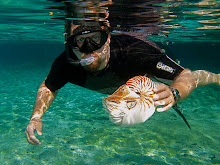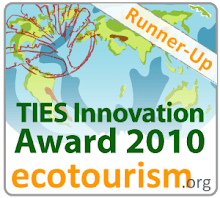 |
| Laysan Albatross chick ready to fledge - Midway Atoll © W. Sentman |
Oceanic Society has been bringing visiting to
Midway Atoll National Wildlife Refuge (MANWR) since 1997. Over that time,
our travelers have become acutely aware of the impacts on wildlife of plastic
pollution accumulating in our oceans.
 |
| Oceanic Society visitor group Eastern Island Midway Atoll NWR |
In spite of its remote location in the
Northwest Hawaiian Islands, Midway Atoll serves as the “poster child” for
plastic pollution and the oceanic gyres that is concentrates in. As the atoll’s
primary residents, and with feeding areas alongside these gyres, the Laysan and
Black-footed albatross are seemingly the most impacted. These seabirds are known to ingest some of
the highest amounts of plastic of any seabird species. Adult albatross consume
the plastic trash when foraging out at sea, and unknowingly pass it on to their
own developing chicks.
 |
| Plastic pollution found inside dead albatross © W. Sentman |
The chicks are not able to regurgitate objects until
later in their lifecycle, so many of them basically become repositories of
plastic waste, and a “test tube” for the impact our increasing dependence on
single use – “disposable plastic” may be having on wildlife and ultimately us. The breeding albatross at the far northwest of the Hawaiian Island chain (Kure and Midway Atolls) consume some of the highest amounts of plastic relative to the other breeding sites.
To date we do not have a full understanding of
what impacts this plastic may be having on the overall albatross populations in
the North Pacific. However, most agree that on seeing, either through graphic
photos of dead chicks with chest cavities full of plastic, or with firsthand experience through visits to their breeding grounds, any amount of plastic
pollution ending up in these majestic birds and their vulnerable chicks is
something we as a community, should take responsibility for, regardless of
impacts. Just as 100% of the albatross chicks on Midway & Kure Atoll have
plastic in them, 100% of visitors who depart these grand wildlife sanctuaries, leave
wanting to do more to help remedy this terrible problem.
It is with great excitement that Oceanic Society launches their
Albatross Adoption Program in 2015
·
To address these concerns more effectively
·
To develop a program that will engage people to
become more aware of their role in the problem
·
To generate greater attention on the global issue
of plastic pollution in our oceans, alongside a fact-based awareness of the
possible impacts on seabirds.
The public has
already begun to adopt Laysan and Black-footed Albatross chicks
on the Oceanic Society website , and
enthusiasm for the Albatross Adoption Program is building.  |
| Volunteers outplanting native species on albatross breeding grounds |
Each adoption directly aids albatross population resiliency by
supporting both habitat restoration programs as well as monitoring
efforts on their key breeding colonies in the Northwest Hawaiian
Islands. The work on the ground is being done by our partners, the Friends
of Midway Atoll and the Kure Atoll Conservancy.
With a generous initial pledge from Spiritual Revolution Yoga (who are
producing a PVC-free “Soaring
Albatross” yoga mat that directly supports our AlbatrossAdoption campaign) we are ready to start creating an army of Albatross
Ambassadors.
By adopting an albatross you will help to make a difference:
- By supporting the efforts to counteract the potential impacts of plastic pollution
- You will receive monthly updates over the course of the breeding season (Nov. - July)
- In May of each adoption year plastic from the breeding colonies in the North Pacific will be sent to you so you can help educate others about the problem.
- Your will help be part of a global movement to advocate for cleaner oceans.
Laysan Albatross in flight Midway Atoll NWR © W. Sentman

















